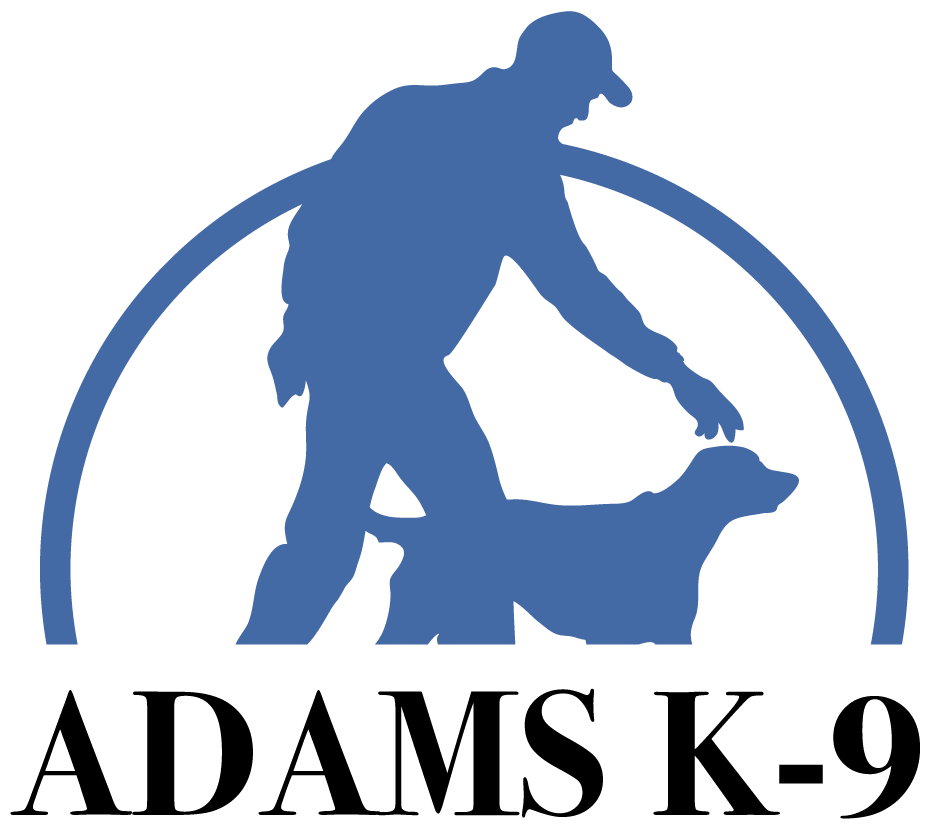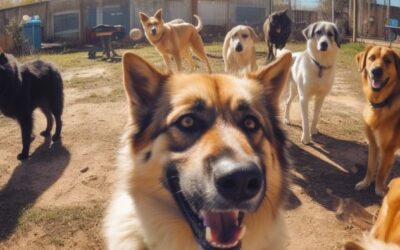Training Tools Are A Crutch
Everyone wants a dog that is 100% reliable. A dog that comes when called all the time, even when there are distractions. There are a variety of tools used in dog training that include clickers, markers, slip collars, gentle leaders, no pull harnessed, prong collars, e-collars, and the list goes on.
Recently, we were working with a client that wanted their dog to be a therapy dog but he did not pass the initial test. He was out of control and overly friendly. Even though the dog was e-collar trained, the owner could not control her dog.
E-collars are not permitted for therapy dog training. In fact, most training collars are not permitted. A therapy dog should be calm and allow people to pet it with out any equipment on whatsoever.
On a side note, some dogs just don’t have what it takes to be a therapy dog. There seems to be a real motivation for many pet owners to want their dogs to be therapy dogs but the dogs just don’t have the temperament for it.
Its great that people want to volunteer and serve in some compacity with their dog, but most dogs don’t have what it takes to be therapy dogs. They are either too high energy, too impulsive, to nervous – you get the idea. If your dog is quirky, live with it. Manage it and love your dog just the way he is. Don’t put the dog in situations they are not comfortable with, it’s not fair for the dog.
Back to our story. So, we clicker-trained with the owner and taught her how to use the clicker to reinforce behavior. But, her concern was that they won’t let her use a clicker during the therapy dog evaluation. She just didn’t understand what the tool was for and what dog training is.
If you have to rely on training equipment for your dog to obey, you’re not dog training. You have a crutch. It’s like dogs will only come when you have a treat. The treat is a crutch.
So the question is, how do we get the dog to do what we want without the crutch, whether that’s enticing with food, or pressure with the training collar? An obedient, well-behaved dog is the result of dog training; repetition, consistency, persistence, clarity and consequences.
Repetition is doing something over and over until they have got it. For example, sit. We use food and feed when all four paws and butt is on the ground. When the dog begins showing you the behavior while you have the treat in your hand, you know they understand the concept.
Now, here is the secret dog training tip.
Intermittent reward. Behavioral scientists have learned the best way to maintain a behavior is by rewarding on a variable ratio schedule. What this means is, reward after an unpredictable number of responses.
https://en.wikipedia.org/wiki/Slot_machineSlot machines are on a variable ration reward schedule.
Consistency is black and white. Dogs can’t make decisions and do gray areas. Either the dog is allowed on the couch or it isn’t. The whole family needs to know the rule and enforce it. If little Jimmy lets the dog on the couch when Mom isn’t home, guess what the dog is getting on the couch.
However if the dog is never permitted on the furniture, then the dog stays off the furniture. It’s all about consistency when it comes to rules. Dogs like structure and things to always be the same. Change something up in a dog’s routine and it stresses them out.
Persistence is the act of getting the dog to do something even if he doesn’t want to. Let’s say we are teaching the dog to sit at every door prior to going through the doorway. We teach this as part of our training programs. Dogs are not allowed to push past the owner to go through a door. The dog waits patiently and follows the owner. It’s all about impulse control and following.
We want the dog to understand the concept of follow, they do not get to be the leader. If the dog refuses to sit at the door, I push his butt down and make him sit. He will sit before we go through this door if it takes me 5 minutes to get the behavior from him.
That is being persistent. If the dog learns they really don’t have to do what you say because instead of being persistent, you gave up, then the dog learns they are in charge and really don’t have to listen to you.
Clarity is communication. Does the dog understand you. Clarity is using the same words for the command. Heel means heel. We don’t sometimes say “heel” and sometimes say” let’s go” and sometimes say “get your butt over here”.
I like e-collar training because there is clarity in communicating with the dog. I first learned about clarity and the e-collar when I was a police dog handler. Once I went through e-collar training with my police dog, I noticed I had a much more obedient, under control police dog. At that point I was sold on e- collar training and thought this would be great to bring to the civilian population.
Hence Adams K-9 and Simply Pawsitive K-9 Training was born.
The final element of dog training is consequences for behavior. Do things right and get rewarded. Take away or put pressure on things you want to extinguish.
There are 4 quadrants of learning. Add something to increase behavior, add something to decrease behavior, remove something to increase behavior and remove something to decrease behavior. A professional dog training uses all four quadrants when training dogs. If you only use one or half, you are only a quarter or half the dog trainer you could be.
Dog training is about conditioning. Conditioning is doing something when the cause is removed. Conditioning occurs when the dog does it, for example come when called, because you have done enough repetitions, consistency, persistence, clarity and consequences so the dog always does it. Because that is the way it’s always been.
My dog rarely wears any collars anymore. I can walk her around the block no leash, no collar and she does it and ignores all the people and barking dogs along the way. I think a lot of our clients don’t get dog training and are married to whatever tool we introduced them to because they do not get the concept of training.
Either that or they don’t want to put in the effort it takes to make the dog’s response automatic. I come because you said come, and auto sit at door, and so on. The dog is 100% reliable because I put in the ground work of dog training. You can do this too, you just have to be commited to doing the work.
If you are struggling and need help with training your dog, please call or email Adams K-9 Dog Training and Kennel for a free consultation.
Related Posts You Might Enjoy
How To Teach A Dog To Track
Persistence is the key to dog training. Without it, you don’t have control and you will not have a reliable recall. Persistence is to continue steadfastly or firmly in some state of purpose, course, or action – especially in spite of opposition.
Love Your Dog Love Your Dog’s Behavior
Spring has sprung and there’s probably no place your dog would rather be right now than outside with you. If you live in the West Michigan area, there are many activities that can provide you and your pup with hours of fun. Here are just a few ideas to do with your dog during spring in West Michigan.
Activities to do in Spring with Your Dog in West Michigan
Spring has sprung and there’s probably no place your dog would rather be right now than outside with you. If you live in the West Michigan area, there are many activities that can provide you and your pup with hours of fun. Here are just a few ideas to do with your dog during spring in West Michigan.




